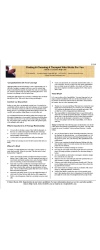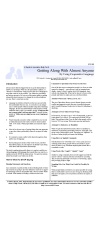Sadly, many communication trainers don’t really have a good grasp of how communication works, beyond the superficial. This gives rise to a number of communication myths being repeated. The second most common myth about communication is that there are only two important channels for communication — verbal, and nonverbal.
This is actually incorrect and misleading. There are actually three. Verbal refers to the words we use, and you are no doubt familiar with that. Nonverbal communication refers to the physical things we do that send messages to others (examples include our posture, stance, the way we move, rolling of eyes and so on). You are probably familiar with that also.
The third channel is paraverbal. Paraverbal refers to tone, cadence, volume, and rate of speech, and those are distinct and separate from the nonverbal channel.
The reason this is important is that the three channels can send conflicting messages from each other since they convey information independently of the others. So, you can “sound angry” (paraverbal), but have nonverbals that send the message that you are happy, and use words that may appear to be angry or happy.
When the three channels are sending different messages, the person listening gets confused, and your point can be lost.





